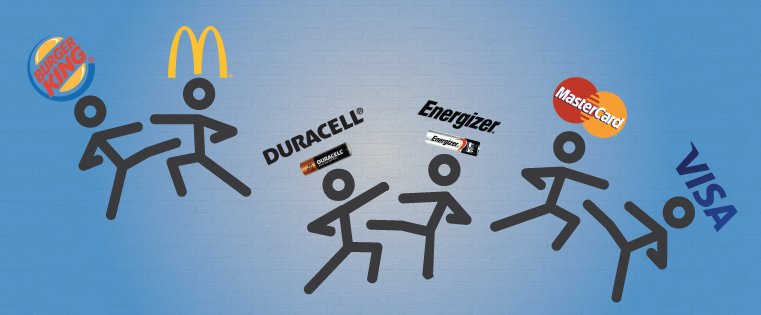 Based on conversations we’ve had this year with brands and companies, we believe 2013 will be the year a lot of cool things happen in digital. Many technologies have been tested and experimented with in the past year or so, and next year we’ll begin to see them implemented. We’re pretty excited to see things come into fruition, so we put together this list on what to expect in the new year.
Based on conversations we’ve had this year with brands and companies, we believe 2013 will be the year a lot of cool things happen in digital. Many technologies have been tested and experimented with in the past year or so, and next year we’ll begin to see them implemented. We’re pretty excited to see things come into fruition, so we put together this list on what to expect in the new year.

Digital Customer Experiences
Connected Experiences in Retail Environments: Many companies today have an eCommerce site, a mobile app and a retail store with very little integration between the digital experiences (other than brand) between them. The teams that build these often build them in organizational and technological silos. In 2013, we hope to see companies begin to connect the technology and digital strategy in a way that creates a seamless experience for the customer no matter the customer’s device or location.
Digital Coupons: Although they have been around for a while and have already seen some growth, 2013 feels like the year these will go mainstream. New developments like Apple’s Passbook and improvements to Google Wallet will make digital couponing simple and useful for the average person and easier to implement in retail environments.
Digital Integration in Retail Environments: In 2013 we’ll see more retailers implement interactive digital experiences within physical stores to increase customer engagement, retain sales and maintain brand preference. Smart phones and technology like geo-fencing provide the opportunity to create more personalized experiences for customers. In the way Burberry has implemented RFID to alert salespeople of the need for a dressing room, they can also use mobile technology to alert salespeople of a vast array of customer-relationship information for high value customers — including their name for a personal greeting, preferred sizes, what they purchased last time and more.
Store Management: In the new year we will see more brands take advantage of digital technologies to improve upon store management as we’ve seen with NAU and Seattle-based Hointer. RFID tags for dressing rooms can also be used for inventory management and theft control. With in-store scanners (or by using their smart phone), customers can scan items to learn more about them, see what other colors are in stock or order the item online for shipment to their house.
Web
Mobile Web: We’re at a tipping point for mobile web use. Data results from the 2012 KPCB Internet Trends Year-End Update confirms this, finding that global mobile traffic now accounts for 13 percent of Internet traffic — up from just 4 percent two years ago. In 2013, companies need to ensure their content strategies cover desktop and mobile web use scenarios. Context is queen! Companies need to serve the right content to users depending on their context.
Unlocking Content: We’re hearing more and more from clients that their content is not in a CMS or it’s accessible only to Flash-friendly devices. As more companies realize they’re spending a lot of time making site updates or losing users because their content can’t be viewed on all devices, 2013 will see an uptick in solutions tailored for companies/brands to set their content free on all devices.
Content Management: Even though product schedules and budgets are tight, consumers are demanding more than ever from their online experiences. In 2013, companies will begin work on streamlining their efforts (if they aren’t already), and we’ll see much more content and online tools created to be re-used on multiple sites.
E-publishing
Publishers Rethink their Business Models: Reality bites for big digital publishing initiatives. Entranced by the iPad launch, many companies have launched high-profile digital initiatives only to see the market isn’t yet there to support them – witness the demise of The Daily. In response to this, publishers will need to fall back on strengths and sustainable business models where economies of scale, industry standard toolsets and re-usable platforms — instead of one-off projects — play central roles.
The Rise of the ULTRA-MEGA-BLOCKBUSTER: In app stores, we see revenue focused around a tiny number of apps despite there being more than a million different titles available (see how 25 developers accounted for 50 percent of U.S. app revenue in November). The combination of limited distribution channels, limited advertising of titles on those channels and up-to-the-minute awareness of global taste and trends means that very few titles go absolutely MASSIVE, while most fail to reach a top 25 list anywhere and thus are quickly forgotten. As book sales shift to digital and consumers shop online rather than in stores, we expect this trend where the most popular titles sell in record-breaking numbers and others struggle even harder for a piece of the pie continue even more in 2012.
Design
Adaptive Tile Layouts: Windows 8 has brought a design pattern to the forefront of the industry. Adaptive tile layout will stick with us for at least the next year or so because it’s one of those rare things that solves problems for both content makers and for users. For content makers, it allows for strategic marketing by surfacing their content in the right place at the right time. For users, it works in much the same way: they’re able to customize the tiles to fit their needs and have their most-used content updated in real time and at the ready for a deeper dive. It’s great that the light is shining on Windows 8 because it illuminates a few truths about building products for their users, and it is spreading an understanding and standard for this approach.
Development
Machine Learning Technology: This (specifically deep learning) has made great strides in the past few years. For the first time ever, computers using deep artificial neural networks can outperform humans in vision tasks such as reading street signs. Companies like Microsoft and Google have already taken advantage of this technology to improve their voice recognition algorithms. Have you noticed the huge improvement in Google voice search this year? Improved data mining and analysis from machine learning is becoming key in more industries. The applications for this technology are broad, and wide-scale use will make it mainstream very soon.
Maker Movement: The hardware/DYI/ Maker/Hacker revolution has been a huge up-and-coming trend in the past year. In 2013, it will grow even more. With everything from learning to code (Khan Academy, Code Academy) to hardware building (Raspberry PI, Arduino, etc.), this movement is highly important. With stores like Adafruit.com and makershed.com, as well as places like Seattle’s Metrix Create Space and Makers Space, being able to obtain just about anything you need to build hardware that manufacturers create makes it so anyone, anywhere can build anything cheaply. This also extends to 3D printing. Printers are relatively cheap, and anyone can plan and print parts to make anything. The next few years will see the end of scarcity apply to the physical world just as it has the digital.









